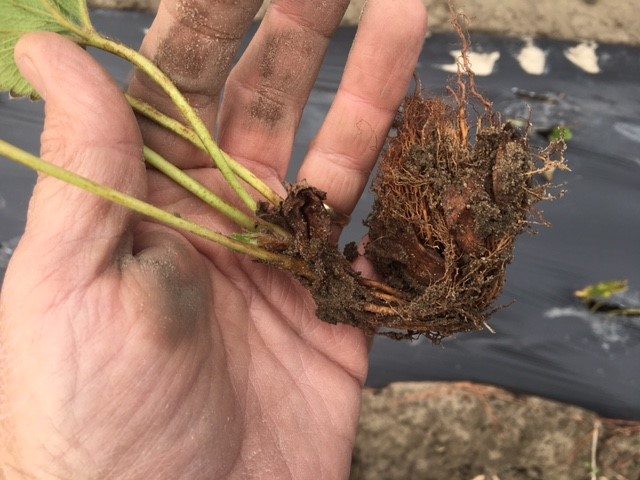Clemson Extension agents provide updates in the The South Carolina Grower this week about the status of various crops being produced throughout the state.
Coastal Region
Zack Snipes reports, “It feels like winter showed up this past week with cold, windy, gloomy days. Most, if not all of our strawberries have been planted. With the cool weather showing up and our later planting dates this year, some growers are opting to use lightweight row covers to push their plants along a little bit. A few things to remember if you opt to do this: use lightweight row covers, make sure all disease and insect issues are taken care of before putting the row covers on, and only leave them on for a few weeks. We want to encourage some growth of our plants but we don’t want our plants getting too big and succulent going into the winter. I visited several farms this week with poor quality fruit trees. A common thread between these plantings is planting depth. In our sandy soils, plants will sink over time so as Phillip Carnley says, “plant them proud,” which means plant them higher than you think they should be planted. Over time, the plants will settle into the correct depth. Pecans, blueberries, and other crops will not grow roots from their trunks, so over time the plant will rot and pathogens will get into the plant when they are buried too deep.”


Midlands
Justin Ballew reports, “It got pretty chilly towards the end of last week and we saw a light frost in a number of places this morning (11/8). Brassica crops are looking great right now. Diamondback moths are still out there, but they seem to be manageable at the moment. There is a little black rot here and there, though we haven’t had enough rain for it to really be a serious problem. Strawberries are getting established. We didn’t accumulate many growing degree days (GDD) last week since it got so cool. Again, I would think about using row covers for a week or two this month to help accumulate GDDs. Here’s a good Strawberry Grower Checklist from the Small Fruit Consortium that has some great tips for the fall season.”

Pee Dee
Bruce McLean reports, “Vegetable crops are looking good around the Pee Dee. Some of the aphid and spider mite pressure that was seen earlier last week has subsided a bit. But be sure not to drop your guard. Their populations can easily bounce back in dry conditions. Stink bugs are still present in pretty high numbers. Stink bugs (in high enough numbers) can cause damage to brassicas. Be sure to scout and treat accordingly. Strawberries are looking good for the most part. Unfortunately, I have seen a good bit of j-rooting in bareroot strawberries. J-rooting is a condition where the roots of the bareroot plant are improperly planted. Instead of the roots of the plant being planted vertically in the soil (where the planting hole is dug to an adequate depth for the length of roots of the transplant), the roots are buried horizontally just below the surface of the soil, often with the root tips exposed. This will severely impact the yield of your plant and if done repeatedly across the field, the yield for the entire planting. Yield is money. It’s a lot easier to take a few minutes prior to planting to show your workers the proper way to plant bareroot plants. Providing them with a (bareroot) planting bar/tool and showing them how to properly use it helps to eliminate these problems. Checking behind your workers is important to ensure that they are continuing those planting techniques. Coming back and trying to fix a problem (if it is severe) is not realistic and cost prohibitive, because it would mean that every plant might need to be inspected and possibly replanted. Research out of California has shown that j-rooting can reduce yields 18.5%. That’s a pretty big bite of the apple (… or in this case, the strawberry) that the grower can likely lose right off the top. I don’t know too many growers that can handle that much of a loss on such a high value crop.”










